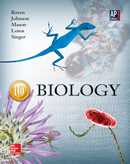1 A) Phosphorus does not cycle through the atmosphere, while nitrogen does. B) Nitrogen found in urine, which is released by mammals into the soil, has to be converted into a usable form by microbes. C) Weathering of rocks releases phosphates but not nitrogen-containing compounds into terrestrial environments. D) Phosphorus exists in a single oxidation state, while nitrogen exists in several different chemical forms. E) Decomposition of animal and plant tissues releases usable phosphates and nitrogen-containing compounds that plants and algae can use. 2 A) transpiration by plants B) photosynthesis by plants C) exhalation by animals D) sweating by animals E) evaporation from lakes and rivers 3 A) glaciers B) springs C) rivers and streams D) lakes and ponds E) groundwater 4 A) methane B) carbon monoxide C) carbon dioxide D) bicarbonate ions E) No choice is correct. 5 A) carbon B) oxygen C) nitrogen D) phosphorus E) iron 6 A) 0% B) 0.03% C) 10% D) 52% E) 78% 7 A) It involves more steps than the other cycles. B) Nitrogen is used in so many compounds in animal bodies. C) Because bacteria are involved in some stages. D) Because it involves multiple changes in the chemical form of nitrogen. E) All choices are correct. 8 A) It is not possible. B) It's possible if each individual primary producer is very rich in energy. C) It's possible if the primary producer is very productive and is consumed as it is produced. D) It is possible if the copepods consume very rapidly. E) While possible, this phenomenon has not yet been explained. 9 A) By helping carnivores see their prey better. B) By increasing the amount of energy and therefore the amount of biomass in the system available to the carnivore to consume. C) There will be a smaller percentage of energy wasted in the system, making more available to the carnivore. D) More than one of these is correct. 10 A) The large island would have more species. B) The small island would have more species. C) They would both have approximately the same number of species. D) It would depend on the actual sizes of the islands and their actual distances from the mainland. E) No choice is correct. 11 A) transpiration/condensation B) evaporation/precipitation C) photosynthesis/cellular respiration D) photosynthesis/transpiration E) precipitation/condensation 12 A) The digestion of food requires energy. B) Not all of the food consumed is digested. C) More than one of these is correct. D) Chemical reactions produce heat that cannot be used. E) No choice is correct. 13 A) the same in both B) greater without trout C) greater with trout D) impossible to predict E) No choice is correct. 14 A) Tropics have greater overall productivity due to more solar energy. B) Tropics have more stable conditions. C) Tropics have more intense predation leading to less competition. D) Tropics have many complex microhabitats. E) All are plausible. 15 A) the size of the island B) the equilibrium between extinction and colonization C) the distance of the island from the mainland D) the type of organism E) the latitude of the island 16 A) primary productivity B) habitat heterogeneity C) climate D) presence of predators E) No choice is NOT correct. 17 A) true B) false 18 A) 30; 6 B) 30; 1.2 C) 6;30 D) 6; 1.2 E) No choice is correct. 19 A) 50 percent feces B) 33 percent cellular respiration C) 17 percent growth D) insect dies before being eaten E) All choices are correct. 20 A) primary producers B) secondary carnivores C) herbivores D) detritivore E) All choices are correct. 21 A) sulfur B) iron C) phosphorus D) nitrogen E) No choice is correct.





